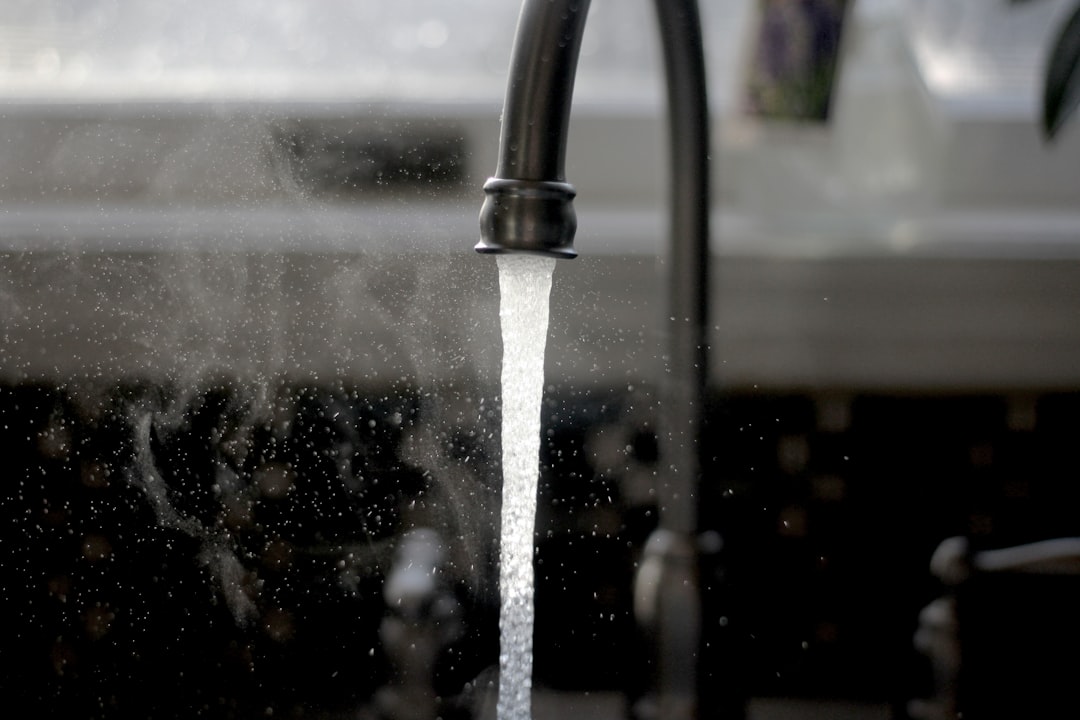Table of Contents
- Introduction
- Context of the parable: Understanding the question posed by the lawyer
- Character analysis: The roles of the priest, Levite, and Samaritan
- Cultural significance: The societal implications of Samaritan and Jewish relations
- The concept of neighbor: Redefining who is our neighbor through the parable
- Acts of compassion: Exploring what it means to help others in need
- Biblical comparisons: Linking the parable to other scripture demonstrating love and mercy
- Contemporary parallels: Relating the parable to modern societal issues and the call for compassion
- The ultimate lesson: The importance of mercy and the call to action for believers
- Conclusion
- Frequently Asked Questions
Introduction
In a world increasingly defined by division and discord, the parable of the Good Samaritan serves as a profound reminder of the transformative power of compassion and kindness. This ancient tale, rooted in Luke 10:25-37, challenges us to look beyond our preconceived boundaries and embrace a love that knows no limits. As the story unfolds, we witness a Samaritan—traditionally seen as an outsider—extend a hand to a wounded stranger, sparking a pivotal question: Who is truly our neighbor?
Delving into this parable reveals deeper truths about humanity, intersectionality, and the moral imperative of empathy. What can this timeless narrative teach us about our own responsibilities in today’s world? As we unpack the layers of this story, we invite you on a journey of discovery that transcends cultural, social, and ethical boundaries. Together, let’s explore how the message of the Good Samaritan can act as a beacon of hope and transformation in our fractured society. Are you ready to be inspired? Your understanding of compassion will never be the same.
Context of the parable: Understanding the question posed by the lawyer
In Luke 10:25-37, the parable of the Good Samaritan begins with a lawyer posing a pivotal question to Jesus: ‘Teacher, what shall I do to inherit eternal life?’ This inquiry not only sets the stage for the parable but also highlights the lawyer’s intent to test Jesus and seek justification for his own understanding of the law. The question reflects a common desire among religious leaders of the time to uphold the law’s requirements for righteousness.
Jesus responds by asking the lawyer what is written in the law, allowing him to articulate his knowledge. The lawyer answers correctly, citing the commandments to love God and love one’s neighbor as oneself. However, Jesus’s follow-up question—’And who is my neighbor?’—pushes the lawyer to confront the limits of his interpretation.
This context is crucial as it exposes the societal divisions and prejudices of the time, particularly between Jews and Samaritans. The parable ultimately challenges the lawyer’s understanding of who is deserving of compassion, prompting readers to reflect on the broader implications of neighborly love.
Character analysis: The roles of the priest, Levite, and Samaritan
The Parable of the Good Samaritan presents three central characters: the priest, the Levite, and the Samaritan, each embodying distinct attitudes toward compassion and responsibility.
The priest, a religious leader, first encounters the injured man but chooses to pass by on the other side. His actions reflect a focus on ritual purity and social status, indicating that his religious duties outweigh the moral imperative to help.
Similarly, the Levite, who serves in the temple, follows suit, reinforcing the theme of indifference among those expected to lead by moral example. His hesitation to assist reveals a systemic failure in the interpretation of religious obligations that neglect communal care.
In stark contrast, the Samaritan is depicted as the true neighbor. Despite being from a community traditionally viewed with disdain by the Jews, he demonstrates genuine compassion by tending to the injured man’s wounds and ensuring his further care. This character serves as a powerful reminder that love and mercy can transcend societal boundaries, highlighting the importance of action over status or affiliation.
Cultural significance: The societal implications of Samaritan and Jewish relations
The Parable of the Good Samaritan, found in Luke 10:25-37, serves as a profound commentary on the complex relationship between Samaritans and Jews during the time of Jesus. Historically, these two groups had deep-seated animosities, rooted in cultural and religious differences. Jews viewed Samaritans as heretics due to their divergent beliefs and practices, while Samaritans regarded Jews with suspicion and contempt. This societal divide not only created barriers but also fostered a culture of exclusion and prejudice.
In telling the story of the Good Samaritan, Jesus challenges these established norms and invites listeners to reconsider their preconceptions. By presenting a Samaritan as the compassionate hero, the parable underscores the importance of empathy and the moral imperative to help others, regardless of their background. This message transcends the historical animosity and urges individuals to reflect on their own biases, highlighting the societal implications of compassion over cultural divisions. The story encourages a reevaluation of one’s understanding of neighborly love and serves as a call to break down barriers that separate different communities.
The concept of neighbor: Redefining who is our neighbor through the parable
The Parable of the Good Samaritan, found in Luke 10:25-37, invites us to rethink the concept of ‘neighbor.’ Traditionally, neighbors are often thought of as those who live nearby or share similar beliefs and backgrounds. However, this parable challenges such narrow definitions by illustrating that our neighbor can be anyone who is in need, regardless of their social, ethnic, or religious differences.
In the story, a Samaritan helps a man from a different community who has been beaten and left for dead. This act of compassion stands in stark contrast to the behavior of others, like the priest and the Levite, who choose to pass by without offering assistance. The Samaritan’s willingness to help demonstrates that true neighborliness transcends societal barriers and prejudices.
By redefining who our neighbor is, the parable emphasizes the importance of empathy and action in our relationships. It calls on us to extend kindness and support to those who may not fit our conventional definitions of community, highlighting that everyone has the capacity to be a neighbor through acts of love and charity.
Acts of compassion: Exploring what it means to help others in need
Acts of compassion are fundamental to the human experience, embodying the values of empathy, kindness, and altruism. In the context of helping others in need, these acts often involve recognizing the struggles and hardships faced by individuals or communities and responding with a desire to alleviate their suffering. Compassion goes beyond mere sympathy; it calls for action, urging individuals to move past their own comforts to assist those who are vulnerable or in distress.
The Parable of the Good Samaritan poignantly illustrates the essence of compassion through the actions of a Samaritan who helps a wounded traveler, despite societal prejudices. This story encourages us to not only extend a hand to those we encounter on our journeys but also to challenge our perceptions of who deserves our help. In various forms, such as volunteering, supporting charitable causes, or simply providing a listening ear to someone in pain, acts of compassion enrich both the giver and the recipient. Ultimately, fostering a culture of helping others can lead to stronger communities and a more empathetic society.
Biblical comparisons: Linking the parable to other scripture demonstrating love and mercy
The Parable of the Good Samaritan, found in Luke 10:25-37, serves as a profound illustration of love and mercy, concepts deeply interwoven throughout the Bible. In this parable, a Samaritan helps a wounded traveler, highlighting the importance of compassion beyond cultural and social boundaries. This theme resonates with other scriptures, such as Matthew 22:39, where Jesus commands to ‘love your neighbor as yourself.’ The Good Samaritan embodies this teaching by providing aid to someone from a different background, challenging societal norms of his time.
Furthermore, Galatians 6:2 encourages believers to ‘carry each other’s burdens,’ echoing the Samaritan’s selfless act. Similarly, in James 2:14-17, faith without works is deemed dead, underscoring the necessity of actionable love. These connections emphasize that true love manifests not only in words but also in deeds, showcasing mercy to those in need without discrimination. As such, the Parable of the Good Samaritan acts as a cornerstone for understanding the biblical call to unconditional love and mercy.
Contemporary parallels: Relating the parable to modern societal issues and the call for compassion
The Parable of the Good Samaritan, as recounted in Luke 10:25-37, resonates deeply within contemporary society, especially as it highlights the importance of compassion in an increasingly divided world. In the parable, a Samaritan helps a traveler who has been beaten and left for dead, despite cultural norms that would have discouraged such kindness. Today, this narrative invites reflection on various societal issues such as homelessness, racial divides, and health crises.
In modern contexts, individuals are often quick to judge or avoid those who are different or in distress. The Samaritan’s actions challenge us to extend our understanding of ‘neighbor’ to include those outside our immediate circles, urging us to confront biases and engage with marginalized communities. Compassion can be seen not only in individual acts of kindness but also in systemic efforts to address inequality and injustice.
As we navigate complex social landscapes, the call for compassion becomes ever more critical, inspiring actions that reflect empathy and solidarity in the face of widespread suffering.
The ultimate lesson: The importance of mercy and the call to action for believers
The Parable of the Good Samaritan, found in Luke 10:25-37, illustrates the vital importance of mercy and compassion in the lives of believers. This parable tells the story of a man who is left injured by the roadside and ignored by those who should have helped him. However, it is the Samaritan, a figure often despised by the Jewish community, who takes action to aid the man in need. This powerful narrative teaches that true neighborliness transcends ethnic and social boundaries.
The ultimate lesson of this parable is a call to action for believers to extend mercy beyond their immediate circles and prejudices. It emphasizes that being a good neighbor involves not only feeling compassion but also taking tangible steps to help those who are suffering. This involves being proactive and willing to engage in selfless acts, regardless of the cost or the identity of the person in need. As believers reflect on this message, they are encouraged to embody the principles of love and mercy in their daily lives, ultimately fostering a more compassionate and just society.
Conclusion
As we reflect on the transformative message of the Good Samaritan, we are reminded that we are never alone in our journey. Christ is always by our side, offering hope and extending His arms toward us as our eternal Savior.
In a world filled with division and indifference, the call for compassion remains more vital than ever. We must ask ourselves, ‘What is God saying to you?’ and more importantly, ‘What are you going to do about it?’
Each act of kindness, no matter how small, can resonate far beyond our immediate circles and break down barriers that divide us. Let us seize the opportunity to embody the lesson of the Good Samaritan, reaching out to those in need without prejudice or hesitation. Embracing this call to action not only enriches our own lives but also contributes to a more compassionate and just society. In the spirit of love and mercy, may we extend our hands to those around us, knowing that in doing so, we reflect the heart of Christ.














